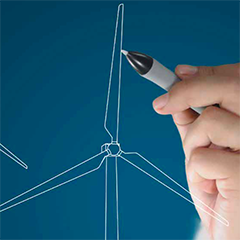We look at the European Wind Energy Association (EWEA)’s view of the future energy landscape beyond 2020.
Current targets set out for 2030 in Europe will see the wind energy sector and other renewable technologies transform the power sector and bring positive impacts to the European power system and the economy as we pivot towards the new normal of renewable energy becoming our main source of electricity. As targets set in Brussels call for renewables to make up at least 27% of energy consumed, Giles Dickson, Chief Executive Officer of the European Wind Energy Association invites policy makers to go beyond the bare minimum.
In their report ‘Aiming High’ published in February 2016, the EWEA examines the extra rewards of taking a more progressive view as a reminder to policy makers of the opportunity that wind energy presents. We provide a summary of the report here.
With 392 GW installed, wind energy can be the single largest source of power generation in the EU by 2030 ahead of coal and gas. Wind energy already plays a significant role in the European power sector. In 2014, the wind industry installed 11,791 MW in the EU – more than gas and coal combined. Today wind energy can meet 10.2% of Europe’s electricity demand with a cumulative capacity of 128.8 GW at the end of 2014.
Additionally, over the past 15 years, wind energy experienced a remarkable growth in the EU. In 2000 wind met 2.4% of the EU’s electricity demand thanks to 12.9 GW of installed capacity. By 2014, 128.8 GW of wind capacity had been installed, enough to meet 10.2% of the EU’s electricity demand. The scalability of wind energy has helped it emerge as a viable alternative to fossil fuels for power generation.



























